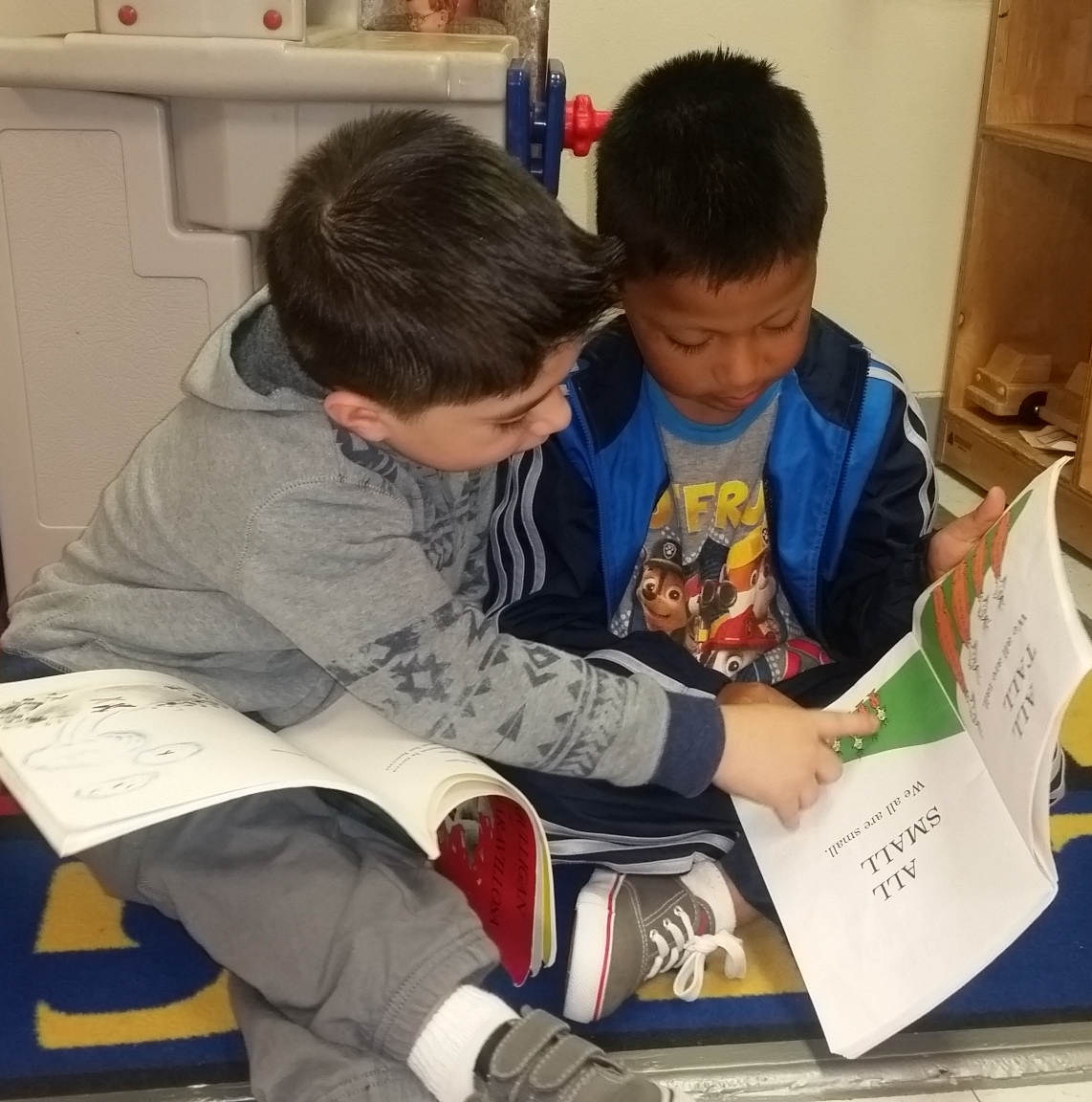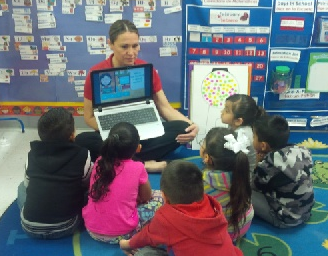• Aurelio M. Montemayor, M.Ed., Consuelo Casas, Berta A. Medrano, Abby Gonzalez • IDRA Newsletter • April 2016 •


In this article, we showcase one school district that is making connections between young children learning to count on their fingers and young adults counting their course credits in college. Through IDRA’s work over the years providing professional development in the Pharr-San Juan-Alamo (PSJA) school district in south Texas, and through our work with Comunitario PTAs in the area and with the Rio Grande Valley – Equal Voice Network, 

PSJA is working to extend services so that no child is left without receiving early childhood services, and to have a seamless connection across programs in prekindergarten through fifth grades. All of the district’s elementary schools have early childhood programs and a bilingual dual language program. Some also have an Early Start bilingual program. In addition, the district is partnering with the county Head Start programs so that teachers who are appropriately prepared and certified combine with the Head Start personnel to deliver a complete, developmentally appropriate, bilingual early childhood program. And they currently have a federally-funded program through the University of Texas Rio Grande Valley to serve children from ages six weeks to 36 months. The district also has a partnership with 13 day care centers.
In the blended classrooms, the Head Start and public school resources are brought together so that the instruction is both developmentally appropriate and so that it prepares children for the more skills-based approach that will be part of their instruction in the higher grades.
The Head Start teachers are very strong in the social-emotional area and work to strengthen the child’s self-concept. This is blended with the academic instruction strengths of the teachers funded by the school district. All of the adults aim to ensure the children feel confident and good about themselves, and that their the experiences are fun, rewarding and positive. Everyone is looking at the total child and making sure that success is built upon success.
The district strives to address five key elements of an effective early childhood program:
- Adults who are competent in the social-emotional aspects of child development as well as developmentally appropriate introduction of academic content;
- Respect for the language and culture of the home;
- Use of native language to support language and concept development;
- Developmentally appropriate activities; and
- Communication with and support for families.
A good teacher for the program must understand and speak both languages, and have the required pedagogical skills. He or she must have the heart and caring for the children exactly as they are.
A visitor noticed recently that all the teachers were smiling, and the children were all engaged. They clearly loved what they were doing. The classroom and school ethos were warm and inviting. The teachers are skilled as teachers and also have the heart for a bilingual, culturally responsive early childhood program. You can see the responses in the children who call the teacher tio (uncle) papi (daddy). Visitors observe happily engaged children. One of the program administrators was actually a Head Start student and is now a certified teacher with a master’s degree in early childhood education – a full cycle of success.
The bilingual early childhood classrooms exhibit all the elements of an excellent early childhood classroom. Most of the talking is being done by the children and not the teacher. Children work together to solve problems. Classrooms have a variety of theme-based centers with ample hands-on materials for the children. The bilingual early childhood classrooms are immersed in what the research points out as effective early childhood approaches – and all in both languages, Spanish and English.
They don’t erase the Spanish for the children to learn English. Both languages will be fully developed, and the children embrace their home culture while also acquiring English. They are being very consistent with using the simultaneous bilingualism to prepare students for a seamless transition to the school district’s dual language program.
The newest program is already receiving praise from Spanish-speaking parents who are happy that their children are singing songs in Spanish learned in the center. Most of our families are Spanish speaking and economically disadvantaged, and their children are developing their language in their home language, which is seen as an asset. Because primary language development is very important, they are capitalizing on the language spoken at home to develop literacy and then add English, the second language.
The district’s experience counters the much-publicized research about families not communicating enough with their children. There is a profusion of communication and culture transmitted within the families and with the children. The early childhood programs draw on all those assets and the “funds of knowledge.” They draw on the language and assets of the home to construct the curriculum and to inform teaching.
They assess where children are even at the earliest stages and use an “Ages and Stages” framework to have families tell them about their children. These are asset-based ways to document what is and to know where to go with the children. The information from the home enables them to know what is appropriate for each stage of development of the child. The stages of development are universal so that whatever the language and culture of the home, within that context, the child’s behavior indicates the stage.
Every year, school leaders take stock in the early childhood programs to see what the strengths are and where there are areas of need. They use the data to modify the program and instruction to make sure that what they are doing is in fact having positive results with the children. Much of the data reflect the instruction in the classroom and therefore the changes that have to happen in curriculum and instruction.
The leadership models both languages in public meetings, and demonstrates complete respect for the language and culture of the communities we serve. People across the district show pride in the students graduating fully biliterate with honors. Just as they have students who are taking high school content courses in Spanish, they are working at their end to ensure that their youngest children are beginning their path through the school system with full respect and development of their home language while also becoming fully proficient in English.
Resources
Bojorquez, H. College Bound and Determined (San Antonio, Texas: Intercultural Development Research Association, 2014).
Pennsylvania Early Learning Investment Commission. Economists, Business Leaders, Gubernatorial Candidates Agree – Early Education Needs to be a Priority Investment for Pennsylvania (Harrisburg, Penn.: PELIC, 2010).
Aurelio M. Montemayor, M.Ed., is a IDRA senior education associate. Comments and questions may be sent to him via email at aurelio.montemayor@idra.org. Consuelo Casas is the principal of PSJA Early Start PK School. Berta Medrano is the PSJA Early Head Start director. Abby Gonzalez is the PSJA Early Start Program specialist.
[©2016, IDRA. This article originally appeared in the April 2016 IDRA Newsletter by the Intercultural Development Research Association. Permission to reproduce this article is granted provided the article is reprinted in its entirety and proper credit is given to IDRA and the author.]


